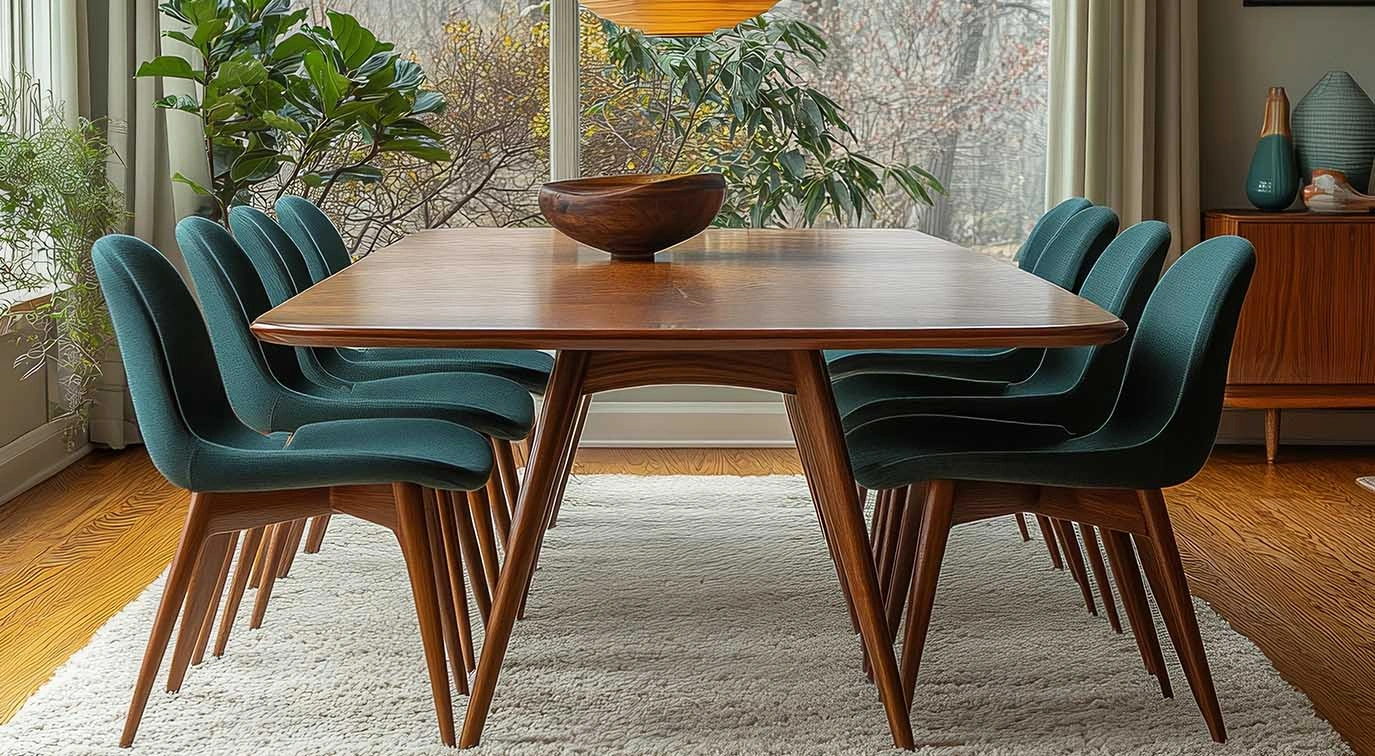The dining table is rapidly evolving from a simple surface for meals into a dynamic, multi-functional hub of the modern Indian home. In 2026, the trends in dining furniture reflect a broader shift towards blending sophisticated aesthetics with practical, adaptable functionality, perfectly suited for apartments and large family homes alike. As we look ahead, the emphasis is on textured, natural materials, flexible shapes, and styles that harmonize with both traditional and contemporary interiors.
If you are planning a renovation or simply looking to update your home, understanding these emerging dining table trends is key to investing in a piece that remains stylish and relevant for years to come.
Trend 1: The Material Revolution – Texture and Tactility
The future of dining is focused on materials that provide visual interest and a tactile experience, moving beyond standard laminate and veneer.
- Statement Stone (Marble and Quartz)
Marble has returned, not just as a luxury item, but as a practical design choice, especially for the high-end Indian market.
- Why it’s trending: Marble offers unparalleled elegance and is naturally cool, a desirable trait in warm Indian climates. Quartz and engineered marble provide the luxurious look with added stain resistance and less maintenance.
- The Look: Expect to see bold, heavily veined dark green, black, or deep grey marble tops, contrasted with sleek, metal bases (often brass or matte black). This material choice makes the Dining Table the undisputed focal point of the room.
- Sustainable Wood & Raw Finishes
Echoing a global push for eco-conscious living, reclaimed and sustainably sourced wood remains a strong trend.
- Why it’s trending: People are seeking furniture with a story. Reclaimed teak or mango wood, often featuring visible grains and knots, adds character, warmth, and a nod to sustainability.
- The Look: Rustic-chic or Wabi-sabi aesthetics dominate, with tables sporting deliberately raw, slightly unfinished, or matte wood surfaces, paired with heavy, often industrial-style metal legs.
- Glass with Artistic Bases
Glass tabletops are being reinvented. The focus shifts entirely to the base, which is becoming sculptural.
- The Look: Bases crafted from intricately carved wood, woven rattan, or complex geometric metal work (like interlocking triangles or sweeping curves) are placed beneath clear glass, turning the support structure into a piece of art.
Trend 2: Shapes for Seamless Flow – Oval and Round
While the rectangular table remains a classic, non-traditional shapes are gaining immense popularity due to their ability to soften a room and maximize seating.
- The Rise of the Oval Table
- Why it’s trending: Oval tables combine the best of both worlds. They offer the ample surface area of a rectangle but, because they lack sharp corners, they promote better flow in smaller or awkward spaces. They are also safer for households with young children.
- Aesthetics: The gentle curves of the oval naturally encourage more intimate conversation and a communal dining experience, perfect for Indian family gatherings.
- The Intimacy of Round Tables
- Why it’s trending: Ideal for compact homes, the round table takes up minimal visual space and ensures every person is seated equally, facilitating better interaction.
- Adaptability: Expect to see many round tables that feature a hidden “leaf” or extension mechanism, allowing them to transform into an oval shape for special occasions, offering maximum utility. (Find the perfect shape in our collection of Dining Furniture Sets).
Trend 3: Functional Flexibility – Adaptable Designs
Modern homes need furniture that adapts to life’s unpredictability—from hosting a small dinner to accommodating a sudden work-from-home scenario.
- The Integrated Storage Dining Table
- The Innovation: These tables often feature discreet drawers or built-in, shallow shelving within the table apron or base.
- Functionality: This solves the perennial issue of clutter, offering handy storage for placemats, cutlery, candles, or even charging cables for laptops, allowing the table to seamlessly switch roles from dining area to Study Furniture space.
- Bar-Height and Counter-Height Dining
- Why it’s trending: Popular in open-plan or kitchen-dining areas, these taller tables offer a relaxed, café-style dining experience.
- Utility: They act as a subtle visual partition between the kitchen and the dining space and are versatile for quick meals, cocktail parties, or as an additional food preparation counter.
Trend 4: Style Fusion – From Japandi to Maximalist Accents
Dining styles are moving away from monolithic uniformity toward personalized fusion.
- Japandi Influence: The blending of Japanese minimalism and Scandinavian warmth is strong. Tables are clean-lined, made of light-toned woods (like ash or light oak), and paired with simple, woven or upholstered Dining Chairs that prioritize comfort and natural textures.
- Indian Maximalism: For those who embrace bold colours and cultural heritage, tables are being paired with mismatched seating—perhaps a traditional wooden bench on one side and contemporary velvet upholstered chairs on the other. This fusion creates a rich, layered aesthetic unique to Indian interiors.
Conclusion: Investing in the Future Hub
The dining table trends of 2026 clearly point toward pieces that are highly functional, environmentally conscious, and deeply textural. The best investment is a table whose material and shape suit your daily life while maintaining the aesthetic appeal that speaks to your personal style. Whether you choose the striking drama of marble or the quiet elegance of an oval wooden table, prioritize a design that supports the dual role of the table as both a place for food and a focal point for family interaction.
At Better Home India, we constantly study global and local design shifts to curate a selection of Dining Table options that are not only on-trend for 2026 but are built with the lasting quality and functionality required by the modern Indian family.












